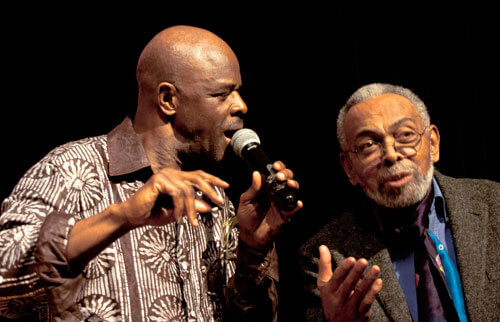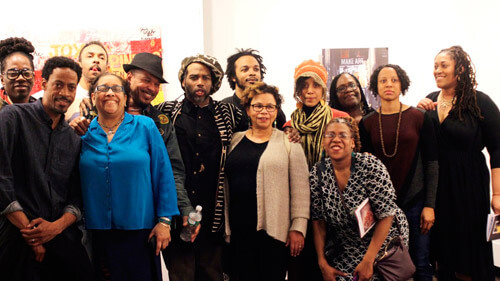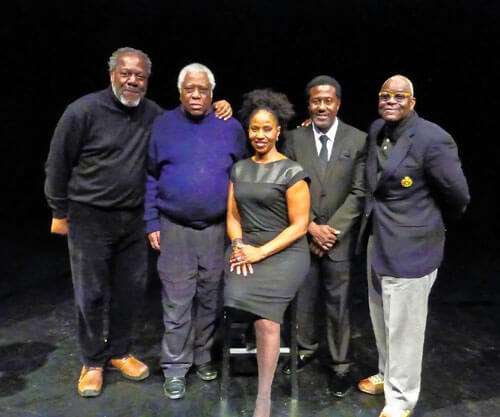“Blues People: Negro Music in White America” by LeRoi Jones was published by the William Morrow Company in 1963, although Jones completed the book in 1961. “Blues People” is a seminal study of African American music and culture, and also the history of African people in America. This is a very important book, as important today as it was when it was published in 1963, fifty years ago. To this day “Blues People” is considered one of the most influential volumes of jazz criticism ever published.
This year 2013 the book and its author, LeRoi Jones, now Amiri Baraka, have been celebrating the 50th anniversary of the publication of “Blues People.” Baraka was a young man of 27 when he completed “Blues People.” He was just beginning his rise to recognition and fame. His book of poetry, “Preface to a Twenty Volume Suicide Note” was published in 1961 and his controversial and celebrated play, “Dutchman” opened at the Cherry Lane Theatre and received an Obie Award in 1964. In April 1965 Baraka and group of Black writers made a move to Harlem and opened the Black Art Repertory Theatre and School (BARTS). This marked the beginning of the Black Arts Movement, the cultural arm of the Black Power Movement.
Baraka tells the story of the seed being planted that spawned his writing of “Blues People.” He and his long time friend and Howard University roommate, AB Spellman were feeling their new found “Hipdom” and identification as “BeBoppers” having seen/heard Bird, Dizzy and Monk and even Brubeck at Oberlin College, when they were students at Howard University in DC. Their English professor, the renowned poet, Sterling Brown pulled them up one day, and invited them to his home. There he showed them his collection of Jazz and Blues Records. 45’s were just making their appearance and most of the collection consisted of LPs and 78s, organized by performer and genre, chronologically. The collection was huge and went back to the early Blues recordings to the then present. Brown told his young students that they were looking at their history, the history of African people in America. Baraka says that it took him a decade to really understand, what Sterling Brown meant.
Of the many programs that took place in 2013 to celebrate “Blue People,” I mention three. On October 3rd the Schomburg Center for Research in Black Cultural presented “The Blues People 50 Years Later,” conversation with Amiri Baraka, Dr. Ingrid Monson and Dr. John Szwed. On October 14th The Center of Jazz Studies at Columbia University presented “Amiri Baraka’s Blues People at Fifty,” a conversation with Professors William J. Harris, Robert G. O’Meally and John Szwed.
On Nov. 5, New Jersey Performing Arts Center (NJPAC) as part of the “James Moody Democracy of Jazz Festival,” presented, “A Celebration of Amiri Baraka’s Blues People at 50,” “Keep Your Razor Sharp,” a musical composition by Craig Harris featuring Craig Harris & Nation of Imagination at the Newark Museum.
Amiri Baraka is arguably the finest living poet in America and perhaps the world. He is a wordsmith extraordinaire as well as a fine novelist, essayist and dramatist. Only two of his many works remain in print today, “Blues People” and “Dutchman & The Slave.” Baraka is not being published in spite of the fact that he remains prolific and is currently working on a biography of Max Roach and one on Pat Patrick, the great saxophonist with the SunRa Arkestras and the father of Deval Patrick, governor of Massachusetts.
When I referenced the library for a copy of “Blues People” there was not a single copy in the whole New York Library System that could be charged out. The Brooklyn Public Library does not even own a copy. The Queens and New York Library do have reference copies available, but only scholars and researcher make use of those copies. The youth with their hungry minds are virtually barred from access to this valuable and essential book of wisdom and critical analysis of jazz and the source of its birth.
© Amun/Ankhra House, Ltd.

Photo by Amun


























